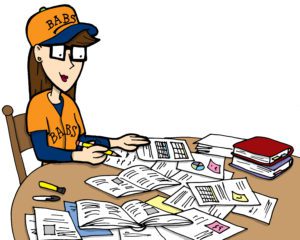21-02-24 Mailbag
 Do you have a question that would be best answered by me and benefit everyone? Submit it on our Contact Page and put MAILBAG in the Subject Line. I’ll select the best ones to respond to in each of the four Game Plan installments.
Do you have a question that would be best answered by me and benefit everyone? Submit it on our Contact Page and put MAILBAG in the Subject Line. I’ll select the best ones to respond to in each of the four Game Plan installments.
— Ron
I don’t understand how to convert BABS ratings into draft rankings for the FISH List (or to effectively use BABS). I understand that the asset categories represent players with similar skills, but I also believe that the tenth player listed in one asset category in many cases will not be preferable to the first player in the next lower category. How does one assign a target draft position using BABS ratings? Help!
Regarding the FISH List, there is nothing scientific here. The BABS rankings used for the FISH List are just a plain old vanilla sort of the BABS list. That’s highly inaccurate as a true ranking, so we’re not going to call them rankings at all. They are now called “markers” that FISH uses to calculate offsets to the ADPs. It still works. Mostly. More here.
As for your larger question, that requires a larger answer, and my best response would be to point you to Book 2 of “The BABS Project 3.0” — specifically, Chapter 9, page 40. The link to the PDF is on the home page.
A review of the FISH data and a comparison to normal cheat cheats seems to indicate that on the offensive side, ADP overvalues while on the Pitching side the over value/under value ratio is much closer. In other words, BABS “hidden gems” are much more likely on the pitching side than on the hitting side. True?
This is true, but this really has always been the case, generally. Particularly in a Rotisserie context, the cost of hitters is driven by big counting stats since they represent four of the five categories. There are a handful of pitchers at the top of the pyramid, but there are far more further down with excellent ERA/WHIP levels who have sneaky value.
I like to think of it this way… A .300 hitter is going to find his playing time into a major role. A 2.00 ERA pitcher is also going to find his playing time, but it might only be in the middle of a bullpen. He’ll be more hidden there, but possibly no less valuable.
An important one from the reader forums: What impact, if any, does FISH have in auction drafts? BABS has always provided “value” opportunities relative to ADP. Does FISH add anything to auction strategy?
The thought exercise underlying the FISH concept is already inherent in auction bidding. If the market believes a player is $20 and you think he’s worth $24, then you naturally will bid at least $1 more than $20. The area that troubles me – and why I have not written about it yet – is that this line of thinking believes there are fixed bid amounts for players. But no player is worth any exact amount, and bidding $21 when you think a player is worth $24 is just part of the normal process. This is unlike snake drafts where there are specific spots you have to target to get players. There is more thinking to be done here.
